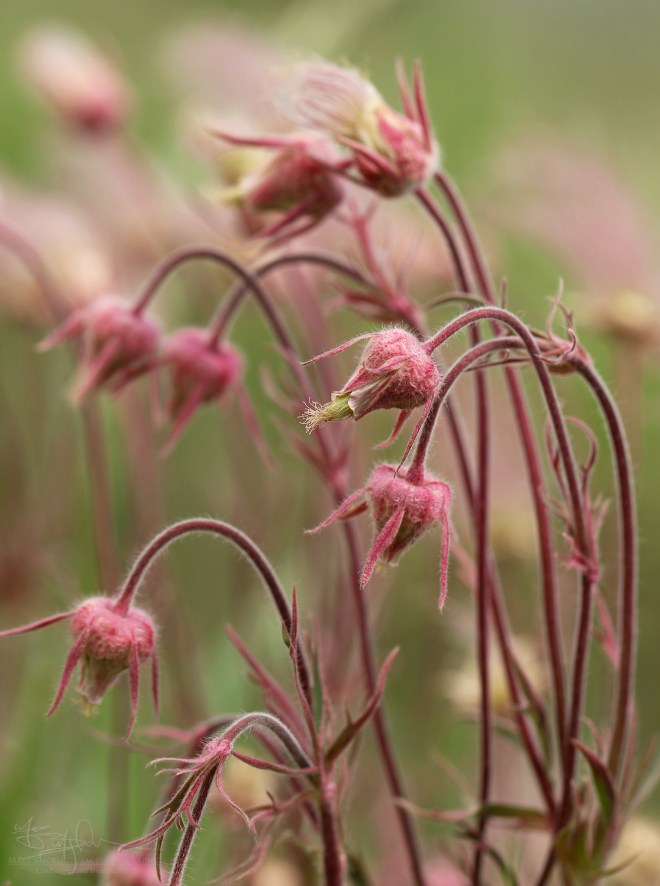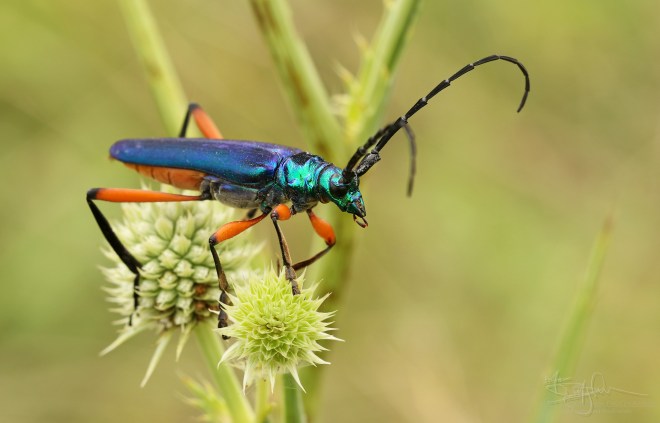
From the high plains we continued west, deeper into the Land of Enchantment. As we gradually climbed in elevation, our surroundings changed from shortgrass prairie to sagebrush flats to Rocky Mountain foothills dominated by pinyon and juniper. It was in the latter community that I saw something slink across the road ahead of us, which I took to be a coyote. We pulled up to where I saw the animal and got out, but after scanning the area a few minutes found nothing. We returned to the truck and moved forward no more than a hundred yards or so when Caro shouted, “There it is!”. The rest was a bit of a blur of excitement, however what I do remember is seeing that something didn’t look right for a coyote. Quickly grabbing the binoculars I focused on what turned out to be two animals about 50 yards away. In that moment I heard Caro shout “Son Pumas!”, and it became clear, as I focused on two young pumas staring at us. Quickly I pulled off the road and fumbled for my camera gear, but they took off immediately. I had managed a few distant shots of their tails, when something burst out from the brush about 30 yards away and went after them. We assume this larger, more strikingly colored individual was their mother. Again I only managed a shot of her back as she ran off, but this encounter with a trio of Mountain Lions was more about the experience than the photos. This is a species I had always dreamed of seeing during the western explorations of my childhood, but despite being in the right habitat so many times, I never did. Instead, I would finally come face to face with them in a chance encounter when I least expected it. That evening we continued into Taos, and looked longingly to the Sangre de Cristo Mountains towering around us, eager to immerse ourselves in their beauty.

Young Pumas retreating.
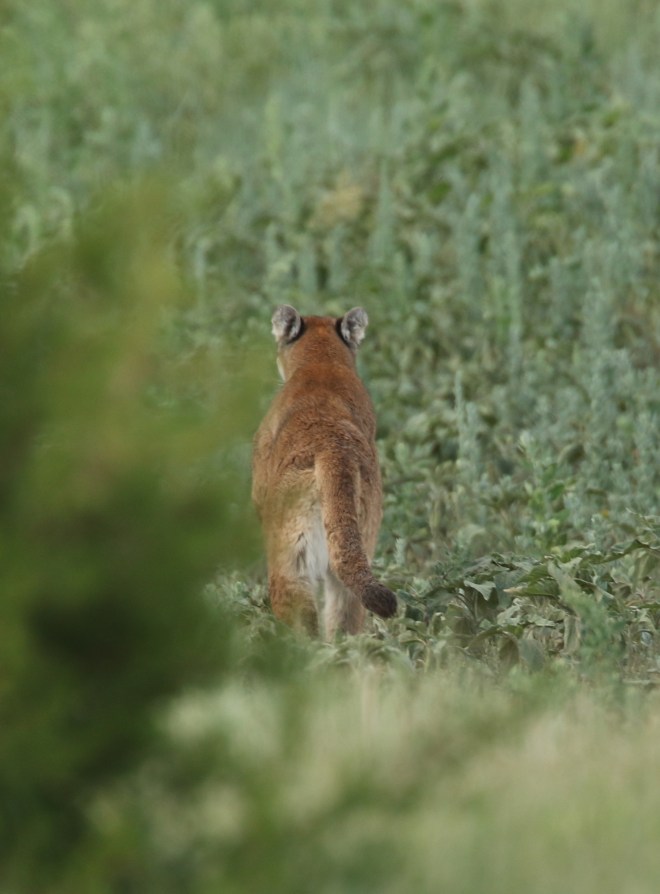
Adult Puma retreating
The next morning we set out into the semi-arid foothills around Taos in search of garnet and staurolite, two interesting minerals known to occur in the vicinity of the Rio Grande. Our search took us through rugged 4×4 roads which I enjoyed navigating. Along the way we stopped to admire a cast of unfamiliar wildflowers. Of particular interest were several species of Penstemon. I later learned that there are some 40+ species of Penstemon in New Mexico! While we saw only a fraction of this diversity, we were quite taken with the species we did observe. Growing among pinyon and ponderosa pines we found Penstemon virgatus. This species is apparently quite variable, and its flowers may be blue, purple, pink, or white.

Penstemon virgatus
Growing nearby we found Penstemon inflatus, a New Mexico endemic.

Penstemon inflatus
Slightly higher in elevation we spotted the five-foot tall Penstemon palmeri. It may have been the most impressive penstemon I’ve seen, with a spike of huge, tightly packed pink blooms. In general, penstemons are not particularly fragrant. This species, however, filled the air around it with a strong, sweet aroma.

Penstemon palmeri
Higher still we found several clusters of Penstemon strictus, a unique, beautiful addition to the flora of the region. Many species of penstemon are popular in the world of horticulture, and make excellent additions to a native garden.

Penstemon strictus
Growing among the Penstemon virgatus and P. inflatus we found several Sego Lilies (Calochortus nuttallii). These beautiful, dainty blooms grew in clearings in the pine-dominated foothills.

Sego Lily
Along crystal clear streams swollen from rapidly melting snow in the high country, we found abundant thickets of Woods’s Rose (Rosa woodsii). This native rose decorates the countryside with its pink blooms and fills the summer air with its sweet aroma.

Woods’s Rose
After searching for the better part of a day, we finally found several pieces of schist bearing the minerals we were after. It was these minerals that prompted Caro to suggest a trip to the area, and the excitement we shared after finding them was one of the highlights of the trip. The discovery came after a long hot morning of searching, right as an early afternoon thunderstorm bore down on us. Hail and lightning caused us to retreat to the truck, where we waited out the weather and resumed our search with renewed intensity. The rocks of interest were much easier to spot as they glistened, wet with rainwater.
With our thirst for rockhounding satisfied, we opted to spend the rest of the day in the high country, and made our way into the lush montane forests of the Sangre de Cristo Mountains. The Sangre de Cristos run from southern colorado into northern New Mexico. In their northern reaches they contain a number of “fourteeners”, that is mountain peaks over 14,000 feet in elevation. They are a bit shorter here, but Wheeler Peak (the highest point in New Mexico) still climbs to over 13,000 feet and is a short distance from Taos.
As we climbed in elevation we began to notice a wealth of mountain wildflowers. We were still too early for the incredible display of wildflowers that bloom in the summer in subalpine meadows of the Rockies – truly one of the most spectacular wildflower shows on the planet – but there were still plenty of floral diversity to admire.
Large colonies of Rocky Mountain Iris (Iris missouriensis), for example, painted clearings above 8,000 feet. Most of these delicate blooms were damaged by recent rain and hail, yet I managed to find a few fresh individuals to photograph.

Rocky Mountain Iris
Along wet seepage slopes and seep-fed streams we found the lovely White Marsh Marigold (Caltha leptosepala) in bloom.

White Marsh Marigold
The most impressive wildflower displays were to be found in the shade of forests dominated by Engelmann Spruce, Subalpine Fir, and Douglas-Fir. Here we found several species growing in close proximity, including Rock Clematis (Clematis columbiana), Western Red Columbine (Aquilegia elegantula), and Franciscan Bluebells (Mertensia franciscana).

Rock Columbine
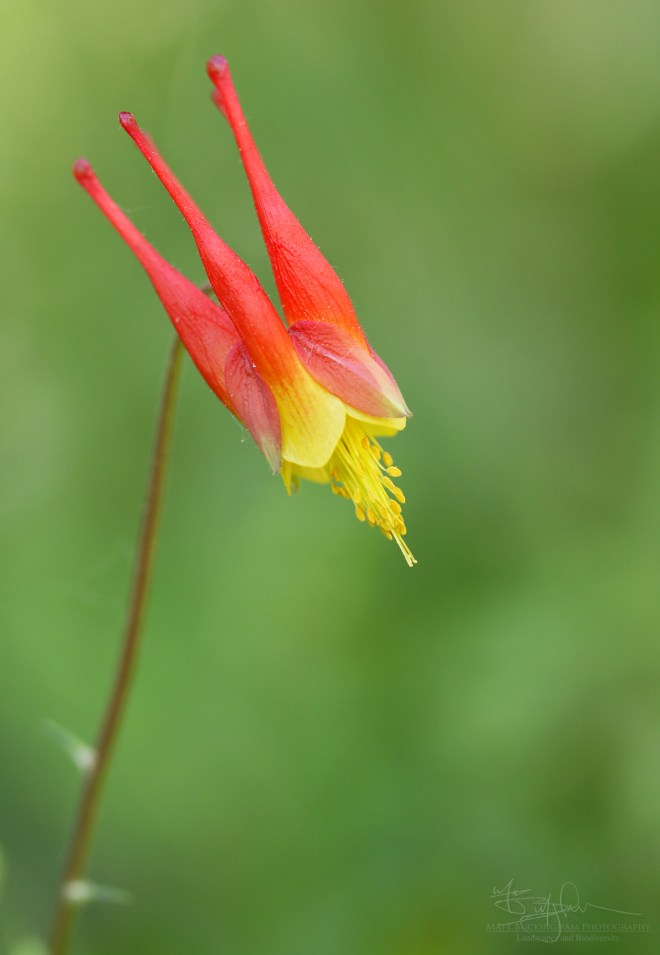
Western Red Columbine
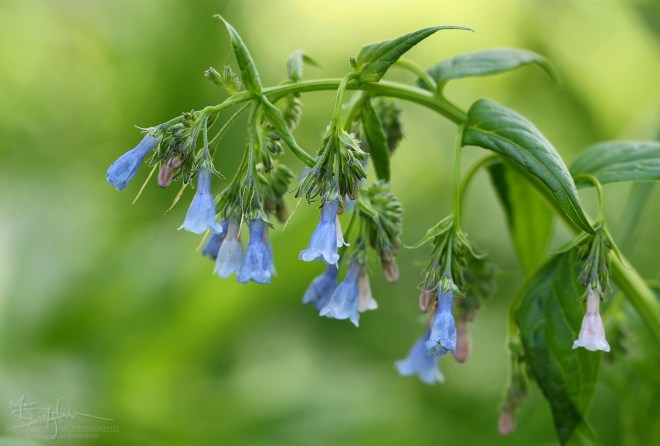
Franciscan Bluebells
The most exciting discoveries, however, were the orchids. I have long been fascinated by this family of peculiar plants, and was happy to finally see a number of species I have long wanted to photograph. In one patch of forest we found three species of the myco-heterotrophic genus Corallorhiza. I have written about one of these species, C. wisteriana in one of my first blog posts. Myco-heterotrophy refers to the process of obtaining nutrients and energy by parasitizing the mycorhizzal fungi of tree roots. Orchids of this genus are completely dependent on these fungi for survival, and have even lost the ability to photosynthesize. The lack of leaves and the green pigment chlorophyll makes spotting them a real challenge. This difficulty made finding them all the more rewarding.
I did not photograph the C. wisteriana that we observed, but I couldn’t resist photographing the beautiful blooms of the Striped Coralroot (Corallorhiza striata). This species has been recorded in the Guadalupe and Chinati Mountains of Texas, but is by all accounts very rare. We found only a single plant growing on a rocky wooded slope.
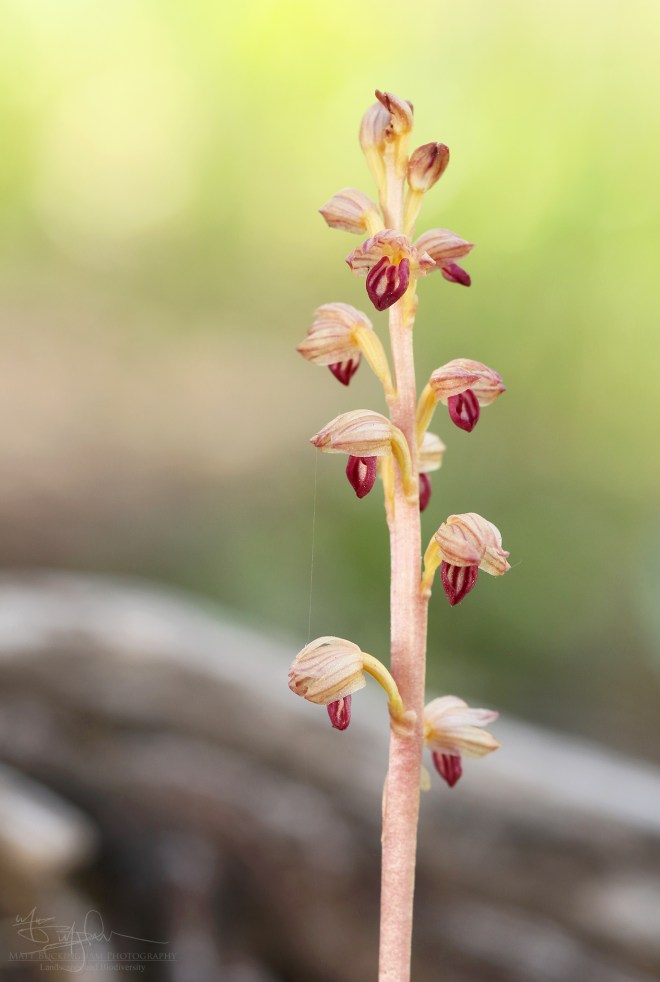
Striped Coralroot
I think I probably jumped for joy when Caro called out that she had found a Spotted Coralroot (Corallorhiza maculata). This species has also been recorded in Texas, in the Davis and Chisos Mountains, and like the Striped Coralroot is believed to be very rare. It turned out to be the most common orchid of the trip, and we found dozens in various stages from newly emerging flowering stems to individuals in full, splendid bloom like the one pictured below.
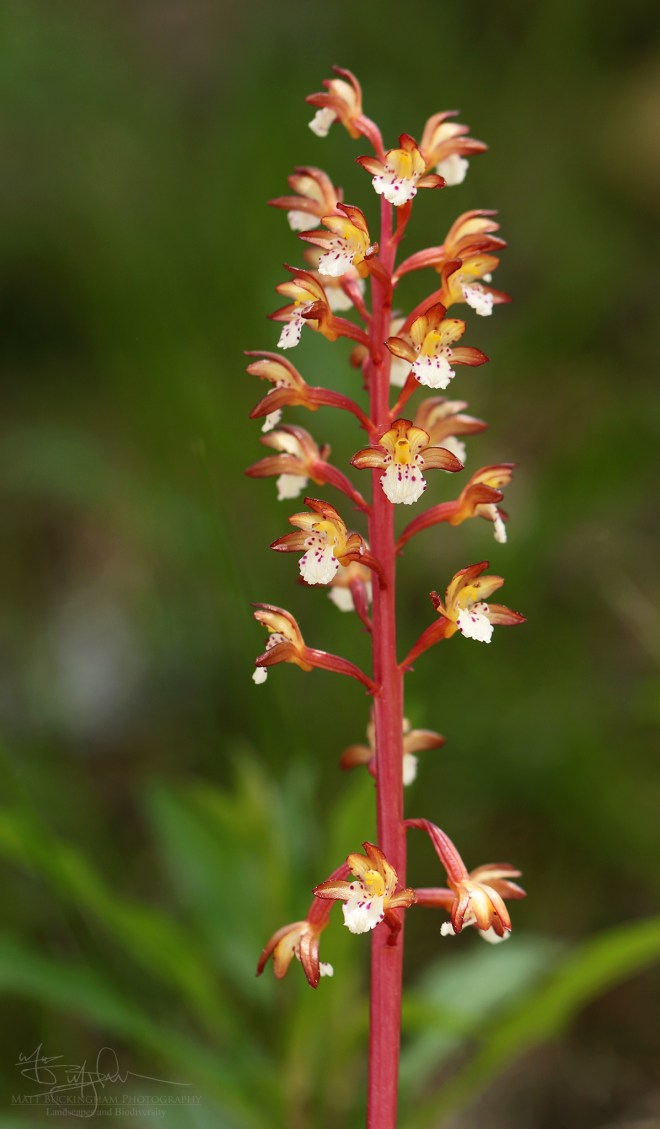
Spotted Coralroot
The absolute floral highlight of the trip however, and perhaps second only to the pumas in terms of overall trip highlights, was finally encountering a species that I had dreamed of seeing since I was a little kid pouring through field guides and coffee table nature books – The Fairy Slipper Orchid (Calypso bulbosa). This orchid always seemed so exotic to me. As a kid, I probably hiked past many not knowing where or how to look. On this trip, however, Caro and I spotted many on the mossy floor of a spruce/fir forest at 10,000 feet in the Sangre de Cristos. I photographed them as I breathed in the chilly mountain air and listened to the rushing waters of a creek swollen with snow melt.

Fairy Slipper Orchid

Fairy Slipper Orchid
Soon our time in the Land of Enchantment came to an end. We were sad to say goodbye to the Sange de Cristos, but grateful for the enrichment they provided us. The Rocky Mountains hold a very special place in my heart, as it is where I fell in love with nature as a young boy, and I was glad to introduce Caro to them, and see on her face the same sense of awe and wonder that I feel for these very special places.







